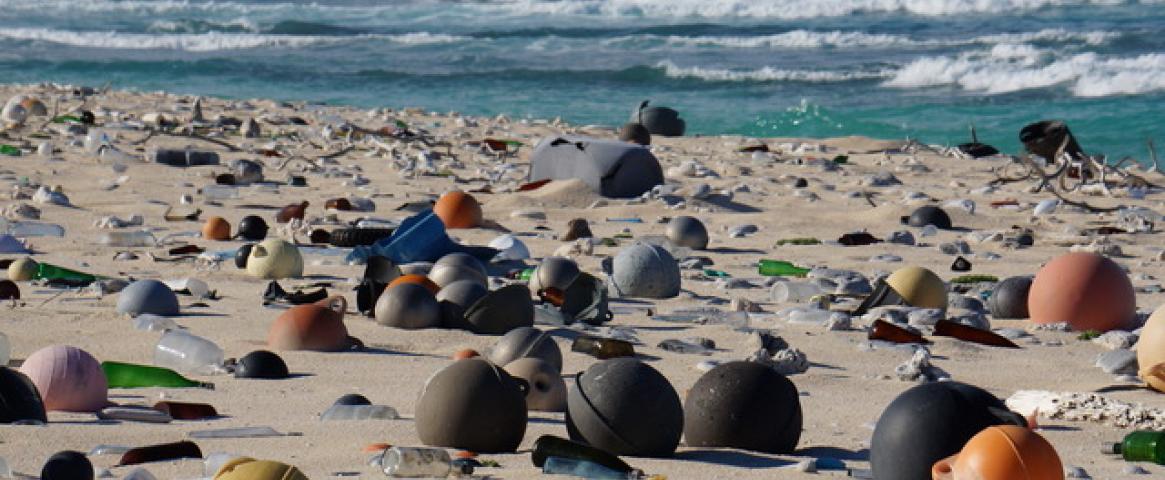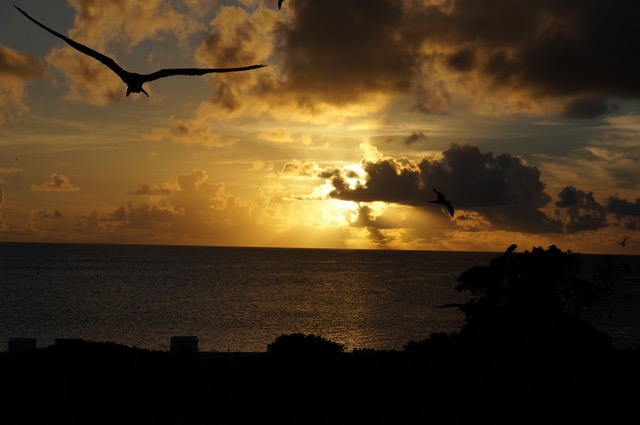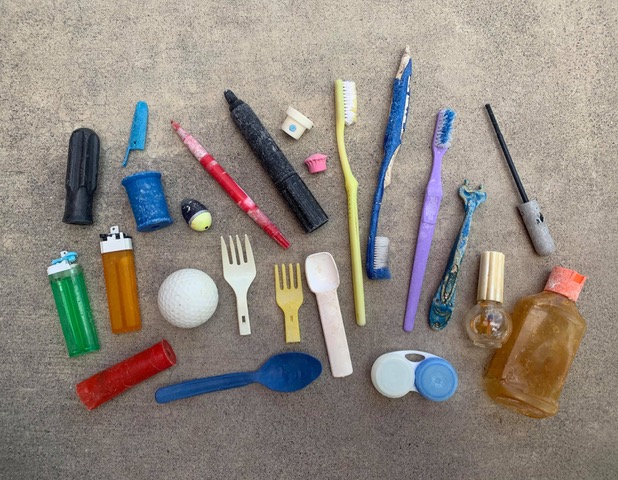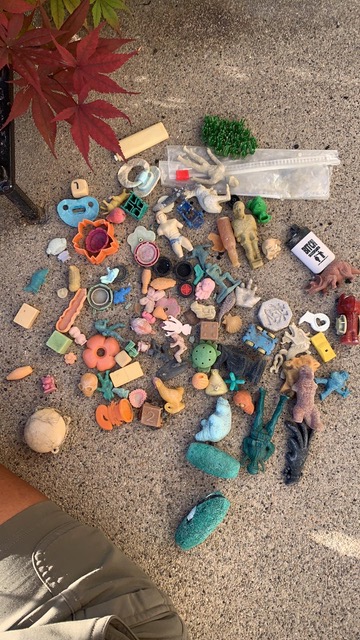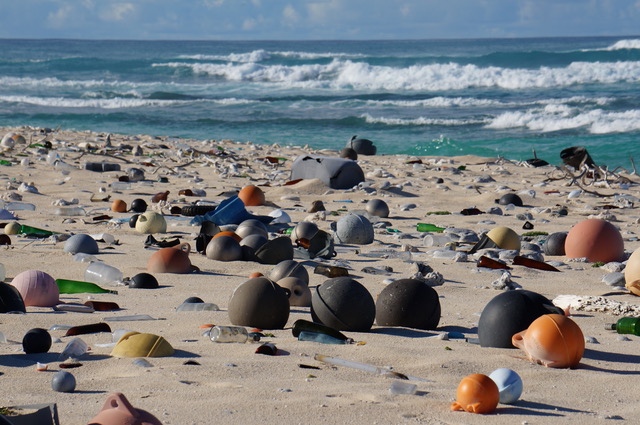By Genni Brookshire
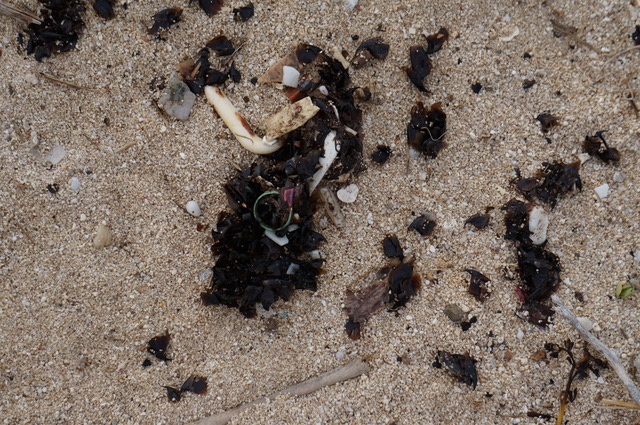
As I pushed my hands into the hot sand, it enveloped every nook and wrinkle and warmed me in places I didn’t even realize were cold. A feeling of awe left me wanting to stretch out my time on the Island. I dreaded going back to civilization almost as much as I dreaded washing the pile of field clothes stacked in my tent.
I spent three months on Laysan Island, about 1,500 miles north of the main Hawaiian Islands, counting seals and learning about seabirds and plastic pollution. During this time, I saw beautiful gold sunsets silhouetted with seabirds and long stretches of beach so littered with garbage they looked like dumpsites
While living on the Island, I witnessed the rainbow finish on black frigate birds that is only seen in certain light and how the white terns line four tiny fish in their pointy beaks perfectly. I was lucky enough to be stationed with five bird enthusiasts. My campmates taught me all the cute and unusual things that make each of the seabird species unique. I learned that white terns will lay their eggs on or in anything, including your shoe, if you leave it out. I saw how frigate birds don’t catch their fish but instead steal fish from other birds. My campmates also told me that even though black and brown noddies look almost identical, I should still attempt to see both species. I saw that the albatross are the royalty of the island; the adults are sleek, regal, and strong, while the babies are fluffy and adorable.
My time on Laysan was not all magical, though. There is no cell phone service, no running water, which also meant no toilet, and flies everywhere. I had to eat lunch crouched under my shirt, using it as a tiny tent to avoid eating flies with my warm peanut butter and jelly on pita bread.
Another bleak part of reality on the remote island is the marine debris. The island is littered with trash -laundry baskets, shoes, fishing rope as thick as your leg and thin line that entangles animals like barbed wire. The garbage is everywhere, and like the fine granular white sand that works its way between your bathing suit and skin, the marine debris works its way into every part of the island. It gets everywhere and in everything, including inside the animals, especially the seabirds.
Seabirds are attracted to plastic because of the way it looks, smells, or if it is covered with food (FWS, 2019). Flying fish lay their eggs on floating volcanic rocks and other floating items (including plastic). The eggs are a natural food source for albatross. Albatross swallow floating items, digest the eggs and regurgitate the indigestible material in a bolus (FWS, 2019). Boluses, are similar to owl pellets and contain squid beaks, natural debris, and in most cases plastic. When the birds eat plastic that is oddly shaped it is difficult for the bird to regurgitate and can lead to serious health implications. Sharp plastic can puncture a bird’s stomach and digestive tract. In addition, an albatrosses’ stomach can become so full with plastic that it is unable to eat and will starve to death.
I recently caught up with Megan Dalton, a seabird biologist and one of my former campmates, to find about her experiences with plastic pollution. Megan spent 10 years of her life traveling from remote island to remote island studying seabirds and focusing on their conservation. She explained that plastics entanglement and ingestion are still at the top of seabird conservation issues, “Being in the Northwestern Islands you see plastic all over the place and skeletons filled with plastic.”
Megan found that three-week-old baby seabirds already suffer, even at their tender age, from blockages and perforations caused by the sharp plastic they were fed by their parents. In 1987, researchers found that 90% of Laysan Albatross chicks had plastic in their digestive tracts (Fry et al., 1987). In 2018, when researchers examined upper digestive tracts of 57 Tritrams’ Stormpetrel chicks, another species of seabird found on Laysan, they found that all of them contained plastic (Youngren et al., 2018).
Megan explained that the amount of plastic she sees has not decreased but awareness of the problem is growing, “You know I think awareness has increased exponentially. My first trip to the Northwesterns was is 2010. Before that, I had only heard of plastic because of a documentary on plastic on Midway that I just watched because I was going there. When I came back, I told everyone about it, and no one knew about it. Now there are groups on social media that are dedicated to zero waste.” In 2019, Barbera-Tomas et al. analyzed social media groups, TEDTalks, photo journals, and videos that are dedicated to reducing plastic use. Many of these entities use a photo of an albatross skeleton filled with plastic to motivate people to change their plastic use habits. The researchers found that images such as the albatross can be a symbol for the problem. The symbols can have far-reaching effects as they give people an understanding of the issue while also assuring them that the problem is real.
Megan has created her own unique symbol of plastic pollution. She collects items she has found from seabird boluses during her fieldwork, “I focus on fun toys and everyday items that you and I use in our daily routines to represent how our consumerism is affecting the birds. Toothbrushes are a big one, mascara wands, cigarette lighters, golf balls, plastic utensils, bottle caps, lots of little plastic containers and their lids, and markers.” The strangest item she has found? A needle and syringe combo with the cap on the needle.
Megan hopes that companies and governments start being accountable for the garbage they produce and recognize marine debris as a global problem. “Unless you use all biodegradable products,” she explained, “you are contributing to the problem.”
Genni Brookshire is a graduate student in the Johns Hopkins MA Science Writing program. She focuses on marine conservation and has completed research projects as a marine animal veterinary technician, aquarist, and seal researcher.
This story was produced as part of NASW's David Perlman Summer Mentoring Program, which was launched in 2020 by our Education Committee. Brookshire was mentored by Jayshree Chander.
